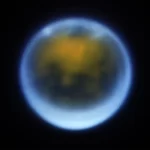Key Takeaways:
- Voyager 1, humanity’s farthest spacecraft, has successfully reestablished communication with NASA after engineers remotely addressed issues with its onboard systems.
- Despite being over 46 years old and situated over 15 billion miles away from Earth, Voyager 1 continues to operate normally, showcasing the durability of its technology.
- The recent communication glitch was resolved through innovative troubleshooting by the Jet Propulsion Laboratory (JPL) mission team, highlighting their expertise in managing long-distance spacecraft operations.
- Voyager 1’s remarkable journey includes crossing into interstellar space in 2012 and achieving a velocity of approximately 37,800mph, making it the first human-made object to venture beyond the solar system.
- Equipped with limited memory and relying on outdated technology like digital tape, Voyager 1 and its twin, Voyager 2, have made invaluable contributions to science, including discovering new moons and providing insights into distant celestial bodies.
Voyager 1, the farthest spacecraft from Earth, has reestablished communication with NASA following extensive efforts by engineers to remotely rectify issues with the 46-year-old probe.
NASA’s Jet Propulsion Laboratory (JPL), responsible for the creation and operation of the agency’s robotic spacecraft, reported in December that Voyager 1, situated over 15 billion miles (24 billion kilometers) away, was transmitting incomprehensible code back to Earth.
In an update issued recently, JPL disclosed that the mission team successfully obtained usable data regarding the condition and functionality of Voyager 1’s engineering systems through innovative troubleshooting. “The subsequent objective is to resume the transmission of scientific data from the spacecraft,” stated JPL. Despite the malfunction, Voyager 1 continued its operations without disruption.
Launched in 1977, Voyager 1 was initially tasked with conducting detailed examinations of Jupiter and Saturn during a five-year mission. However, its mission extended far beyond its original scope, and the spacecraft is now approaching its fiftieth year of operation.
Voyager 1 entered interstellar space in August 2012, marking the first time a human-made object ventured beyond the confines of the solar system. Its current velocity is approximately 37,800mph (60,821km/h).
Hi, it's me. – V1 https://t.co/jgGFBfxIOe
— NASA Voyager (@NASAVoyager) April 22, 2024
The recent issue stemmed from a malfunction in one of Voyager 1’s three onboard computers, responsible for processing and transmitting scientific and engineering data to Earth. Unable to repair the faulty component, the JPL team opted to relocate the corrupted code elsewhere, a challenging task given the outdated technology.
Both Voyager 1 and its companion probe, Voyager 2, are equipped with less than 70 kilobytes of memory in total—equivalent to a low-resolution computer image. They rely on antiquated digital tape for data storage.
The corrective measures were transmitted from Earth on 18 April, with a two-day delay in assessing their effectiveness due to the time it takes for radio signals to travel to Voyager 1 and back. “Confirmation of the successful modification was received from the spacecraft on 20 April,” confirmed JPL.
Accompanying the announcement, JPL shared a photograph capturing members of the Voyager flight team celebrating in a conference room upon regaining access to usable data, surrounded by laptops, notebooks, and doughnuts.
Retired Canadian astronaut Chris Hadfield, a veteran of two space shuttle missions and former commander of the International Space Station, likened the JPL mission to performing maintenance on a vintage car from a distance.
“Imagine a scenario where a computer chip fails in your 1977 vehicle, except it’s situated 15 billion miles away in interstellar space,” Hadfield remarked on X. “Nasa’s Voyager probe was successfully repaired by this team of adept software engineers.”
Voyager 1 and 2 have contributed significantly to scientific knowledge, capturing detailed images of Saturn, uncovering Jupiter’s rings, and documenting active volcanic activity on one of its moons, Io. Additionally, the probes discovered 23 new moons orbiting the outer planets.
Due to their extensive distance from the sun, the Voyager probes are unable to rely on solar panels for power. Instead, they convert heat generated from the natural radioactive decay of plutonium into electricity to sustain their operations.
NASA aims to continue gathering data from both Voyager spacecraft for several more years, although engineers anticipate communication may become challenging within a decade as the probes move farther from Earth. Voyager 2, slightly lagging behind its counterpart, is also traveling at a slightly slower pace.
Approximately 40,000 years from now, the probes will pass relatively close to two stars. Voyager 1 will approach a star in the Ursa Minor constellation at a distance of 1.7 light years, while Voyager 2 will come within a similar range of a star named Ross 248 in the Andromeda constellation.


